Why Konya is the best place to watch the Whirling Dervish (2024)
This post may contain affiliate links. If you make a purchase using one of these links, I may receive a small reward at no extra cost to you. See my Disclosure Policy for more information.
Konya is unique in its deep connection to Sufism and the Dervish. Even though it doesn’t feature on most itineraries for Turkey, it’s nonetheless a worthy destination, especially for those seeking authentic experiences.
Konya is THE place of the original Whirling Dervish – the real Spiritual Order from where all other dervish take energy and inspiration. While you may see dervishes whirling in Istanbul, there they are mostly a tourist attraction. In Konya, it’s tradition.
Here’s all you need to know about the Whirling Dervish and why Konya is the best place to watch the sacred sama ceremony they perform every week on Saturday.
The Konya Whirling Dervish Ceremony
First of all, it’s not a ‘show‘.
Many people, even some tour operators and guides call it a Dervish show but it’s a religious ceremony called ‘Sama‘.
The dervish dances they perform in most places around Istanbul (among other tourism hotspots in Turkey) may be just for show, but the one in Konya is a proper spiritual ritual.
The performers are none other than the actual Mewlewī Order! It’s been kept intact over 7 centuries and passed down from generation to generation of Sufis!
Time, Place, Price
- Saturdays at 7 PM;
- Mevlana Cultural Center;
- 50 TRY (~2 USD).
Nowadays the whirling dervish in Konya “perform” (it’s still a ritual for them, more of an art show for the average observer) for the public once a week on Saturday at 7 PM. If you decide to visit Konya, make sure you are there on Saturday evening!
The show takes place in the Mevlana Cultural Center, about a 15-minute walk from the Mevlana Mausoleum and Museum.
The tickets to the Konya Whirling Dervish cost only 50 Lira, which is a bit under 2 dollars.
I’d say it’s totally worth it, considering one of the ‘fake’ shows in Istanbul can cost upwards of 50 USD!
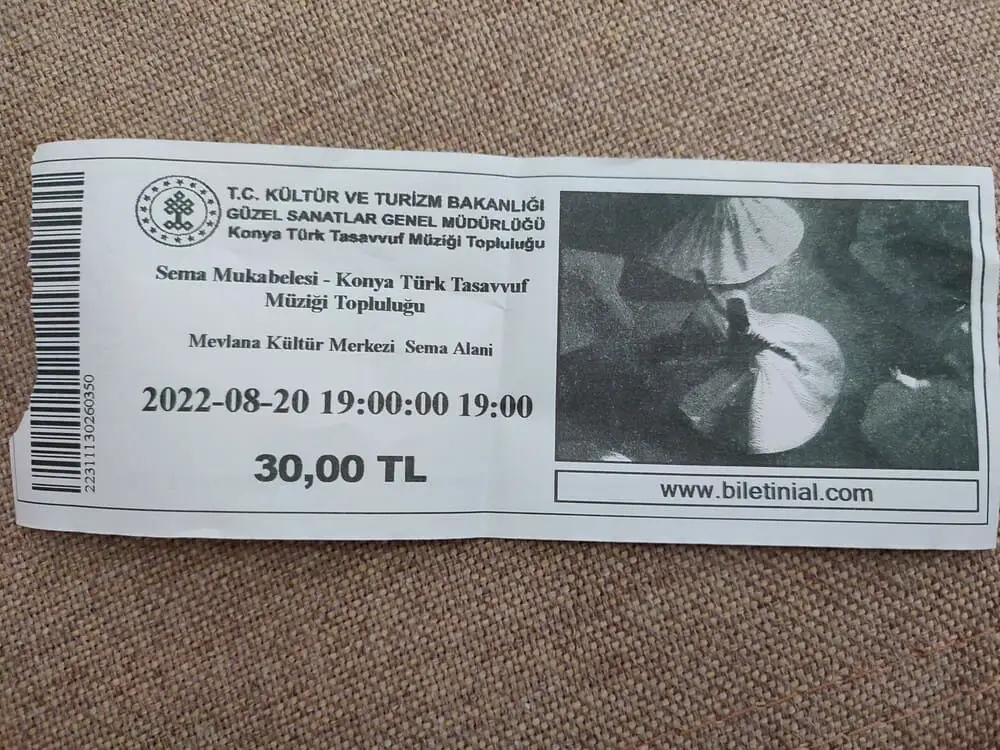
What to expect from the Konya Dervish Show
Inside is a huge Sama hall. It can host upwards of 3000 people. When I was there it didn’t get full and there were plenty of available spots.
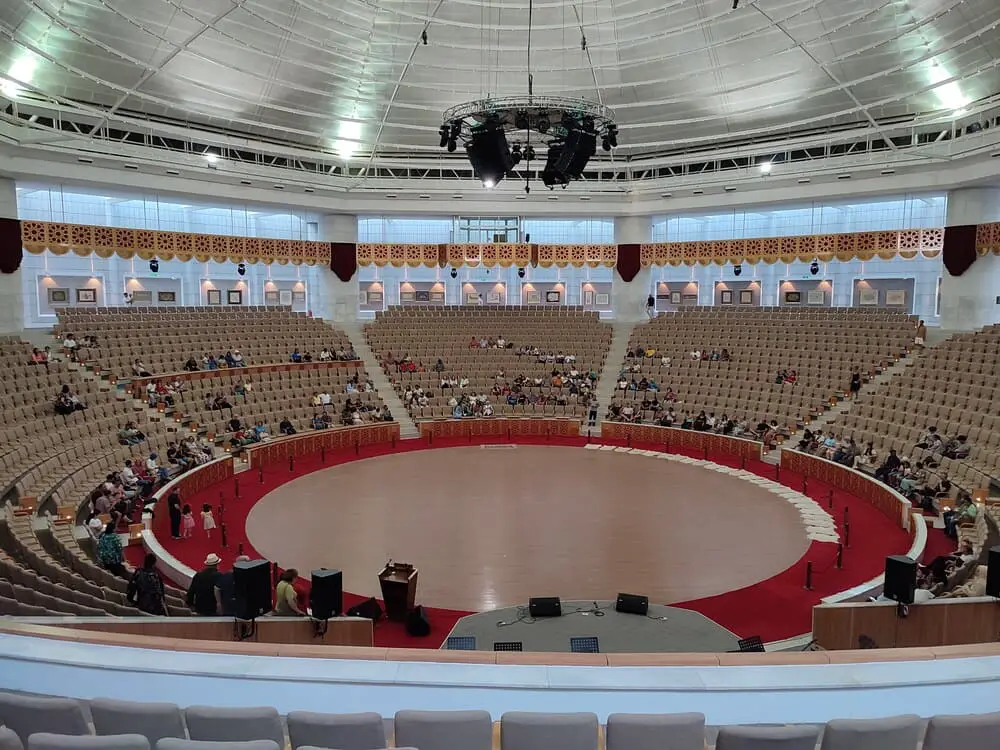
The Sufis either play a musical instrument, sing, or dance on the scene. It’s a popular misconception that the ceremony is just the ‘whirling’ – on the contrary, Sama is a ritual consisting of multiple steps with music and dance working together.
The Sufis enter bowing and arrange in a crescent in one part of the floor.
The first to enter is the Semazenbashi (dance master) who puts a red sheepskin on the floor.
The last to enter is the Shaikh (the leader), who walks slowly, bows, and steps on the red sheepskin.
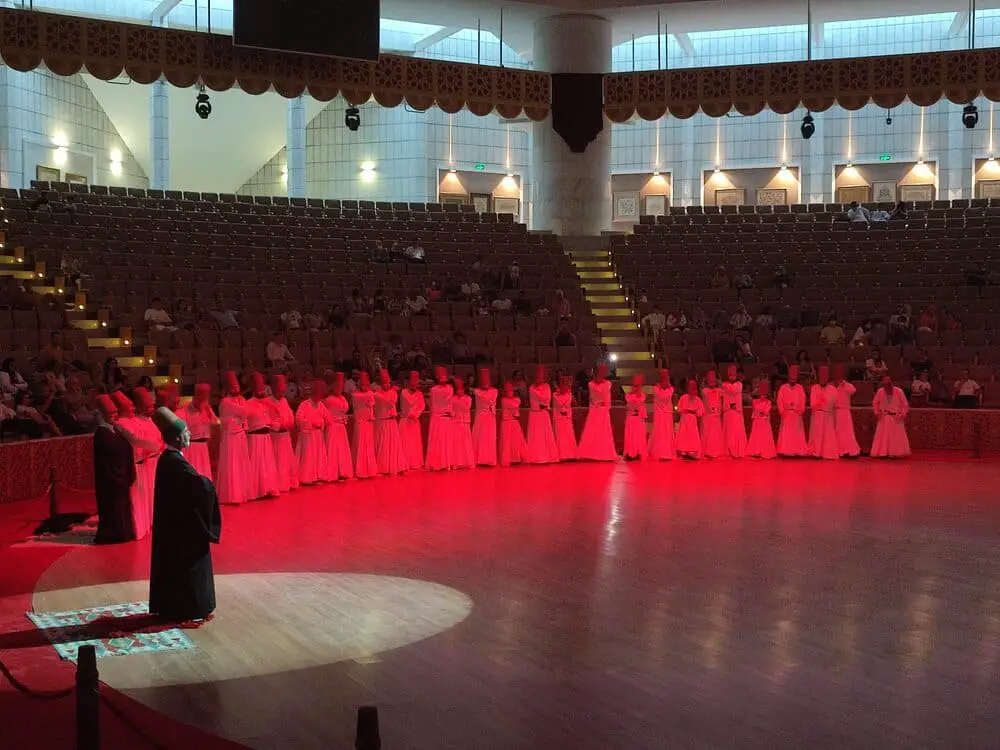
The first part of Sama is a eulogy to the Prophet Mohammed, followed by a flute solo.
Then they remove their cloaks, hug or kiss the Shaikh, and go around in a spiral in what’s called the Circling of Veled:

The dancing continues for a few minutes until suddenly it stops and the dervish form groups of 2-3 on the outer part of the circle. Then they repeat the whole thing again.
All in all, there are four repetitions together called Selam. In the ceremony I attended they were differentiated by using different colors to illuminate the Semahane (Sema hall).
First, it was the white color which symbolizes humans accepting their status as created beings.
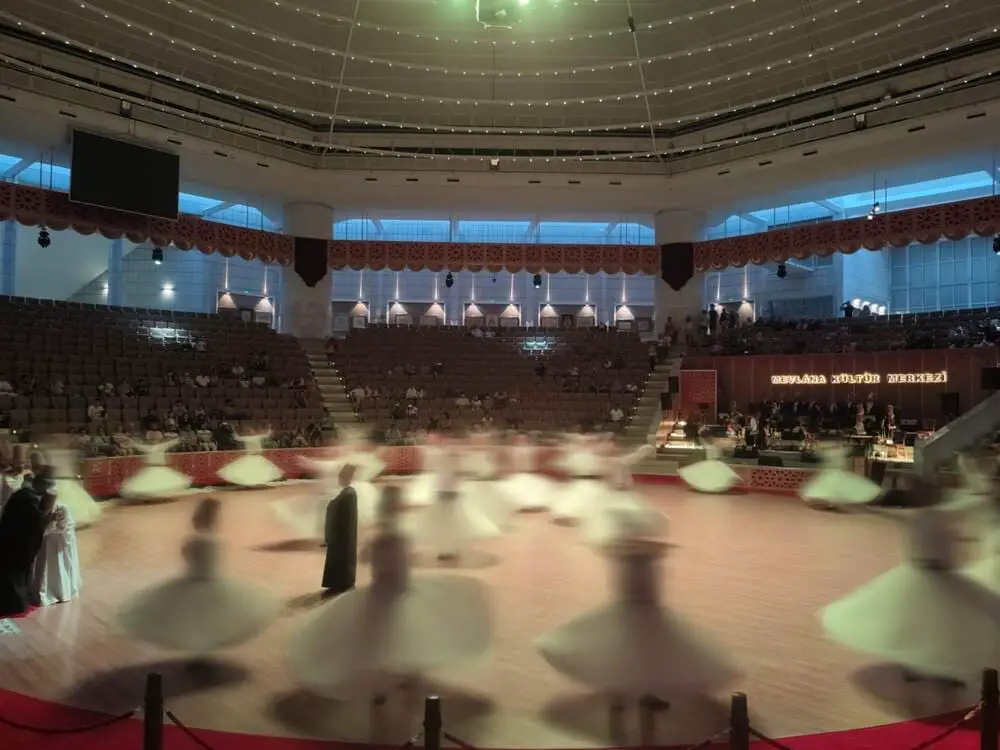
Then they go around kissing the hand of the Shaikh, the color changes to purple and they dance the second segment symbolizing the rapture felt when confronted with God’s omnipotent power.
The color changes to green for the third segment representing the transformation of God’s power into love.
Finally, the fourth segment is illuminated in blue symbolizing humans’ return to serve.
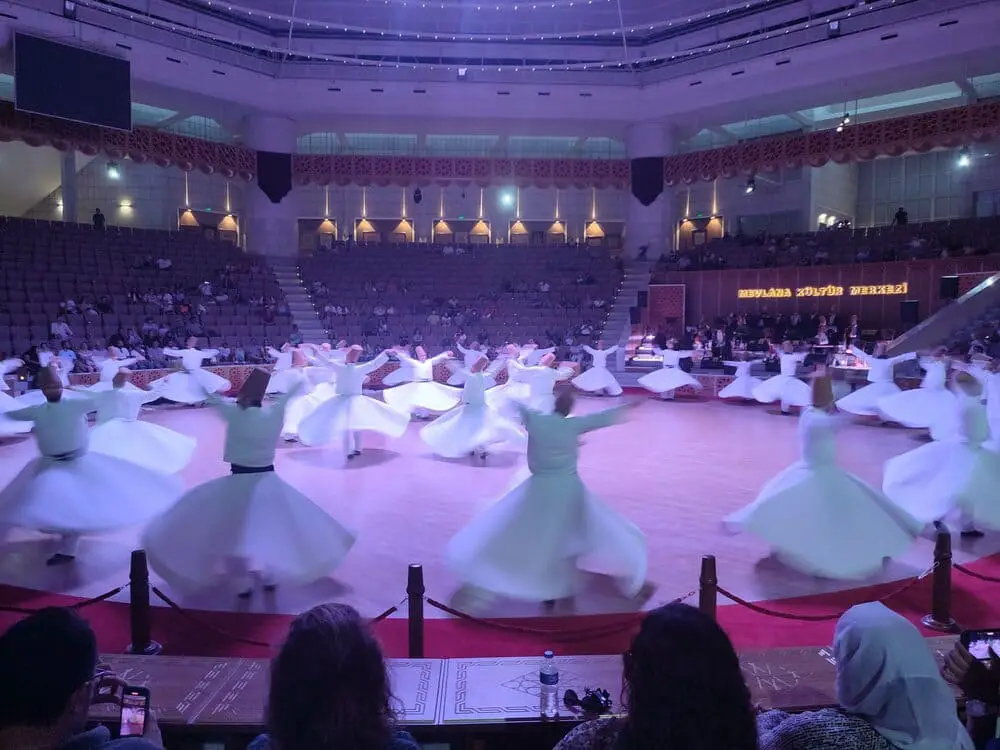
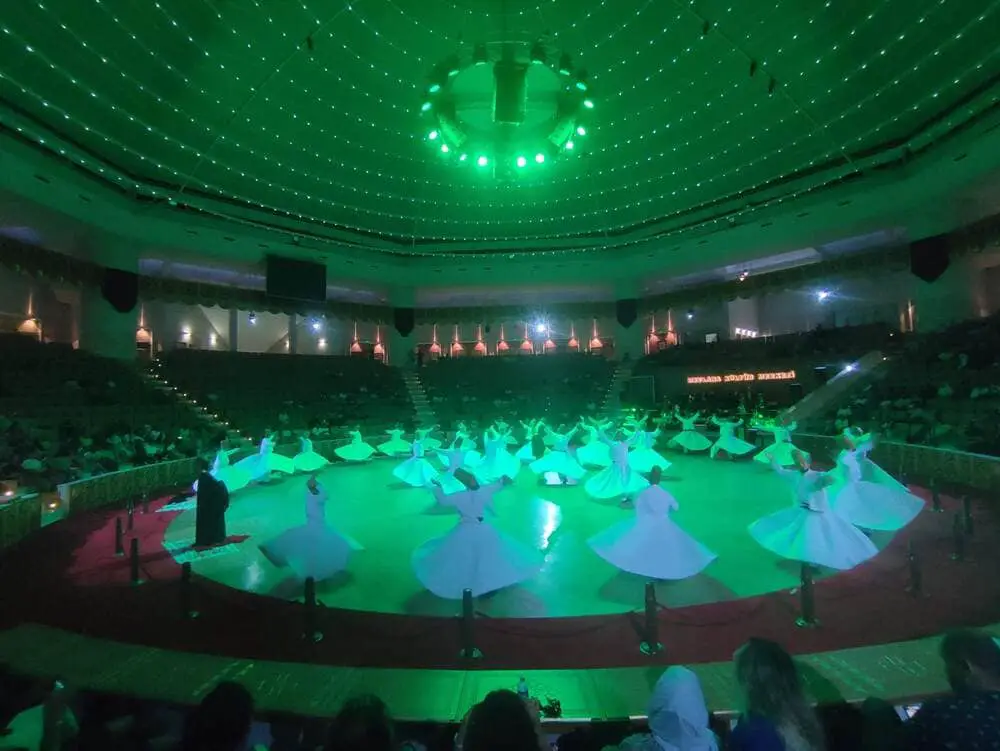

The ceremony is always accompanied by music, but no talking. The dervish are silent unless there’s a wajd – a religious ecstasy. Wajd is never faked, so it’s very rare.
During the ceremony, there are minor details each symbolizing something. How they hold their hands, where they stand, how they dance, etc – all of these tiny actions differ and tell a hidden story.
The Sama is part of UNESCO’s list of intangible cultural heritage.
While there are practicing Dervish all around Turkey and beyond, Konya is the best place to watch an authentic Whirling Dervish performance because it’s by the original Mevlevi Order.
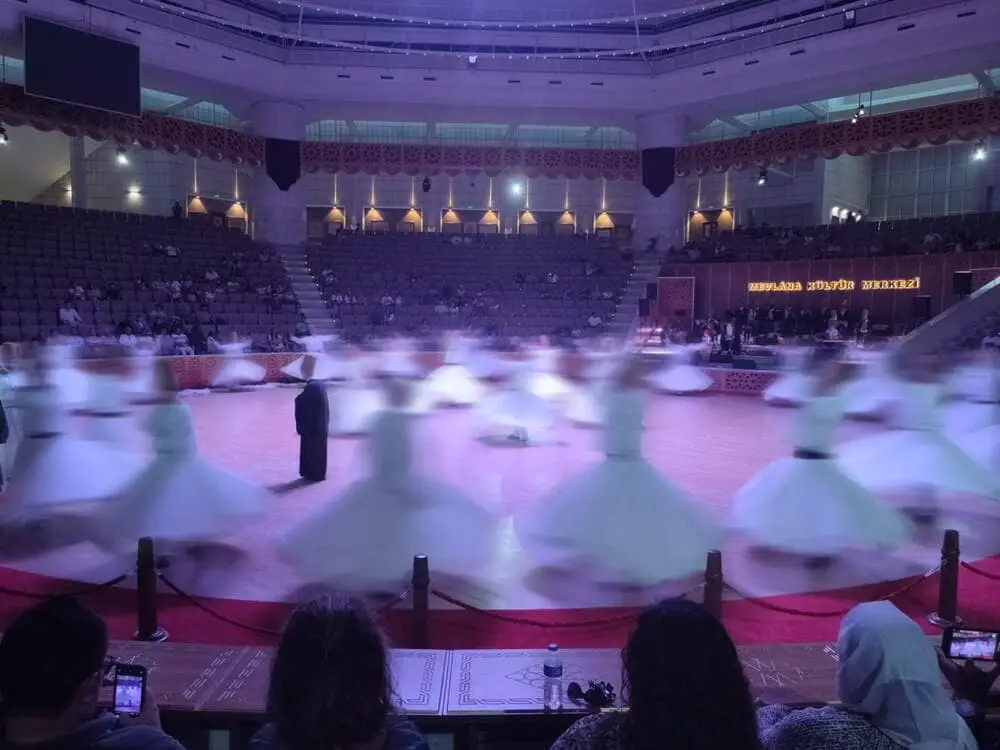
What is Sufism?
Sufism is a set of practices within Islam that focus on spirituality and mysticism. This article gives a good overview of Sufism.
Sufi practitioners are divided into orders and one of those orders is that of Rumi, a 13th-century poet from Persia.
Who are the Dervish?
Rumi, better known in Turkey as Mevlana (“our master“), was something of a refugee at the beginning of the 13th century.
His ancestral lands were invaded by the Mongols and traveling on a caravan he migrated West until eventually reaching Konya in the then Seljuk Sultanate.
In Konya, he created an order of Sufis that would focus on reaching religious ecstasy. How? By dancing in circles while singing and playing simple musical instruments.
This is the brief origin story of the Whirling Dervish. The order was nominally founded in the year of his death, 1273, by his followers with the name Mewlewī Order.
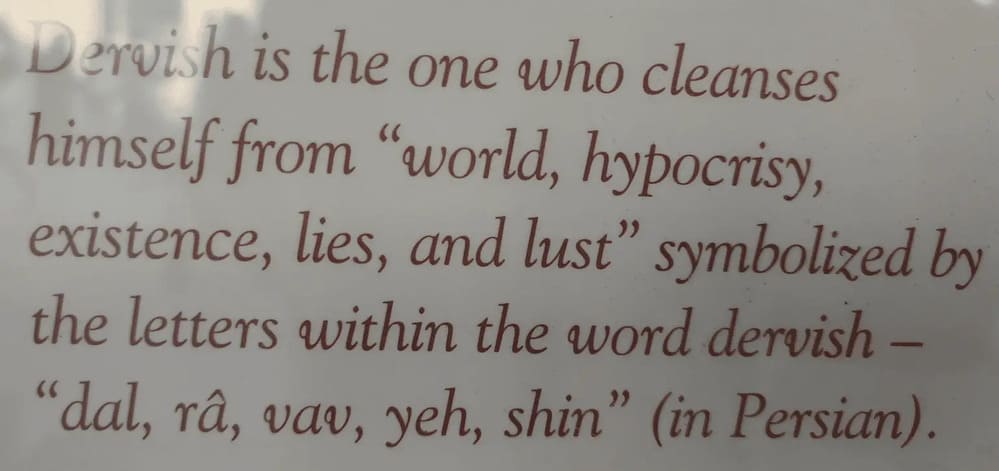
Konya’s Mevlana Mausoleum and Museum
Apart from the whirling dervish, the other main attraction in Konya is the final resting place of Mevlana. In a way, you can’t appreciate the Sama ceremony without also visiting Mevlana’s Mausoleum.
It started as a dervish lodge and had been that until 1926 when Ataturk ordered that it be turned into a museum as part of his reforms to detach religion from state affairs.

It isn’t a typical museum. It’s more of a pilgrimage site. However, it provides enough information to give you some overview of the Mevlevi Order and its practices.
The one fun fact that stuck with me was that a dervish had to go through 1001 days of suffering (meaning studying the religious practices, dances, rituals, ethics, music, and poetry among other things) and is only then given a cell and the title “Dede”.

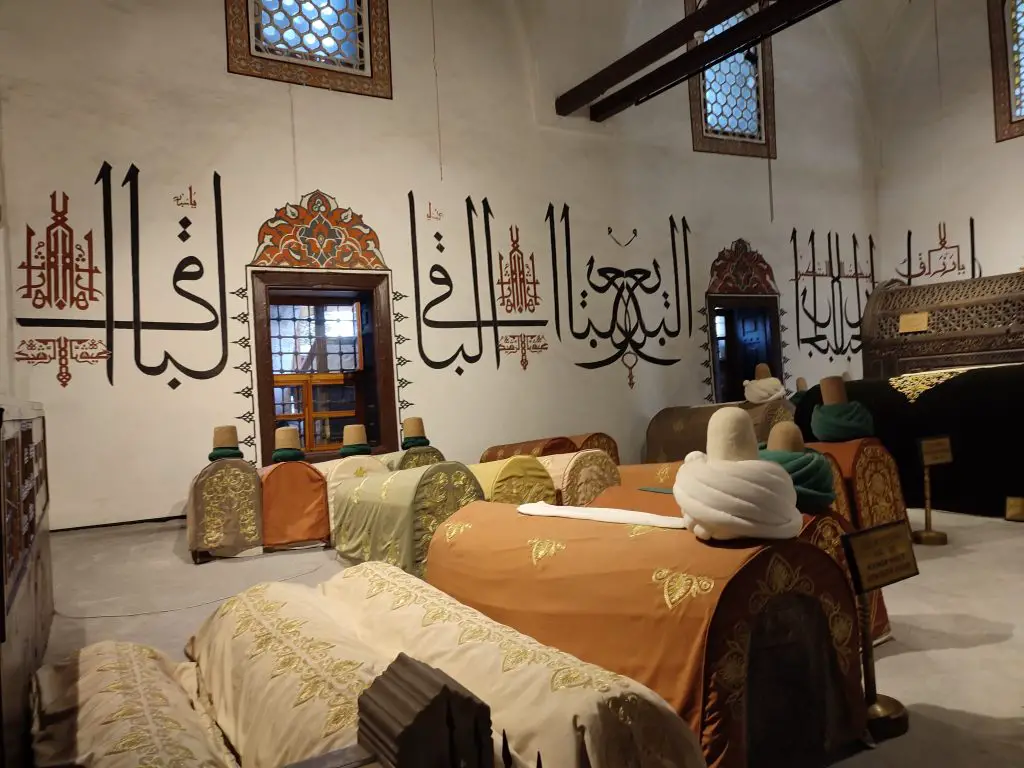
He would then not leave this cell for 3 days and after that do 18 services for the Order such as shopping, running errands, and lamp-keeping.
He then finally becomes a hücrenişîn – a full member of the order.
The museum’s center of gravity is the mausoleum. Upon entering, you can see a row of lavishly ornamented coffins.
Most people congregate at the end of the corridor where Mevlana/Rumi’s tomb is.
The tomb is a masterpiece of art and being a religious pilgrimage site only adds to its glory.
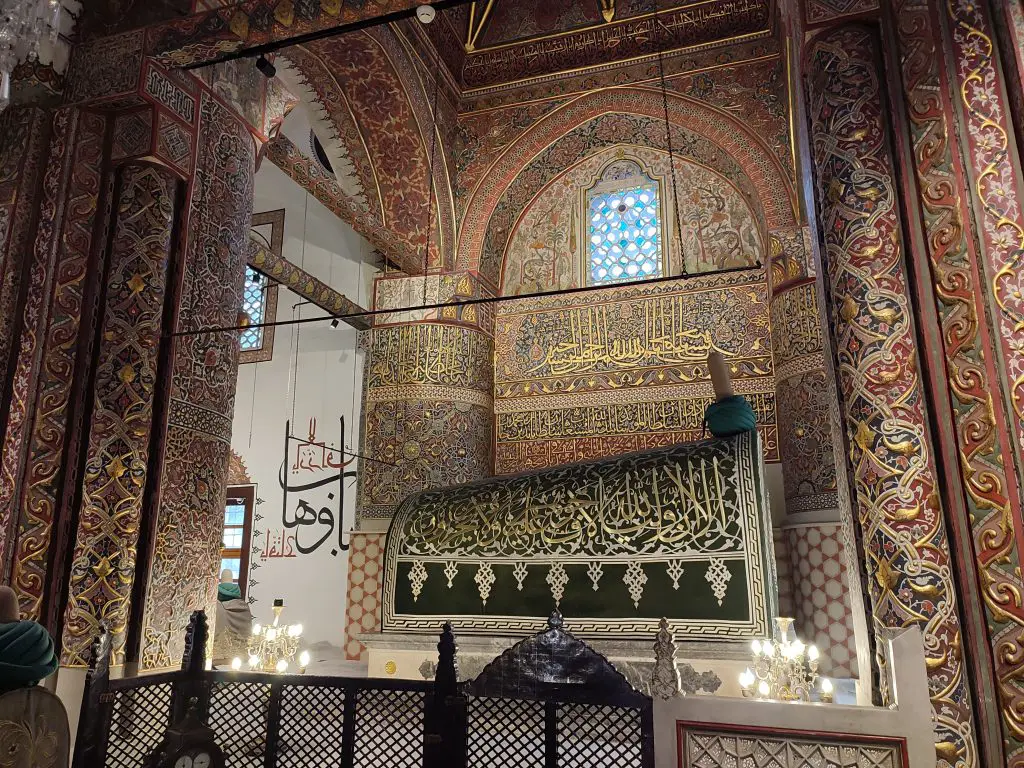
The Mevlana Mausoleum receives many pilgrims and domestic tourists throughout the year. It’s believed that praying to Mevlana’s tomb brings prosperity and luck.
Should you visit Konya, make sure to visit the Mevlana Museum in the morning before attending the Whirling Dervish Ceremony.
How to Get to Konya
Konya is a big city in Turkey and well-connected to other places of interest. You can reach it using:
- High-speed train from Istanbul or Ankara;
- Buses from Izmir, Antalya, Adana, or Cappadoccia;
- Domestic flights from Istanbul.
Check more options and book on 12Go.asia
Where next? What about Gaziantep, the culinary capital of Turkey? It was decimated in the 2023 Earthquake but is trying to rebuild to its former glory.

Hey Simon… Thanks a lot for this post. I wanted to be at Konya on saturday to experience Sama at the Mevlana museum, but need to make a lot of changes to my originally planned itinerary, and end up staying extra days in Ankara and Capadocia. I will be visiting Istanbul, Pamukkale and Bursa as well during by 14 days trip. Are there any other places than Istanbul where I can experience Sama although not as authentic as in Konya ?
Hello Shak,
Yes, I believe it’s possible to attend a Sama ceremony in Bursa and Ankara. Not sure exactly how often they do it or where, but I have anecdotal evidence that such exist. You will have to check locally.
In Cappadocia, in Goreme more specifically, a Sama ceremony happens daily. It’s more of a tourist attraction but this doesn’t mean it’s bad – just that it can be a bit, well, touristy. Check out this event and decide for yourself.
If you’re deep into spirituality and religiousity, Konya is the place to be for the Sufi experience. But if you aren’t that much into those or can’t be there, the other options are good enough.
Best,
Simon
Hello! İ would like to go to Konya around 10.10.2024. Are during this time Dervish performances still available?
Yes, the performance is every Saturday, regardless of season.
Am so moved by this post and want to experience this. I have these questions:
1. How long is the ceremony? I plan to be there on September 7 which is a Saturday.
2. Can I leave for Antalya after the ceremony or should I stay overnight?
3. And where should I stay?
4. How do I go to Antalya from Konya?
Hi Sunita,
1) The ceremony is around an hour. Make sure to arrive at least 20 minutes prior to the beginning.
2) You can leave, of course, as long as there are buses. Konya has more to offer than just the Sufis. Also, it will be getting late and you will have to travel overnight if you decide to leave for Antalya immediately. It’s better to stay the night and travel on the next day.
3) Konya is Turkey’s 6th biggest city and has sooo many options for hotels and guesthouses. If you want a central location, look for something around Alaaddin Park.
4) There are frequent buses. Check on Obilet.
This is has been very helpful. One more question…I am a senior woman travelling solo. Is it safe for me?
I would say Turkey is pretty safe in general. Although I am not a woman and my perspective of safety for women in some countries is often different. But you will be fine in Turkey 🙂
Hi,
I’m traveling to Konya next month and really want to experience this. Do you have to buy the tickets in advance? Or just at the door on the same night?
Hi Liv!
When I went, I bought the ticket at the door. The Sama hall is quite large and I doubt it ever gets sold out. I think there is no way to buy the tickets in advance anyway. Just show up and go for it 🙂
-S
Learned a lot from this short story. Thank you! I bet you had an awesome spiritual experience while in the space of the ritual!